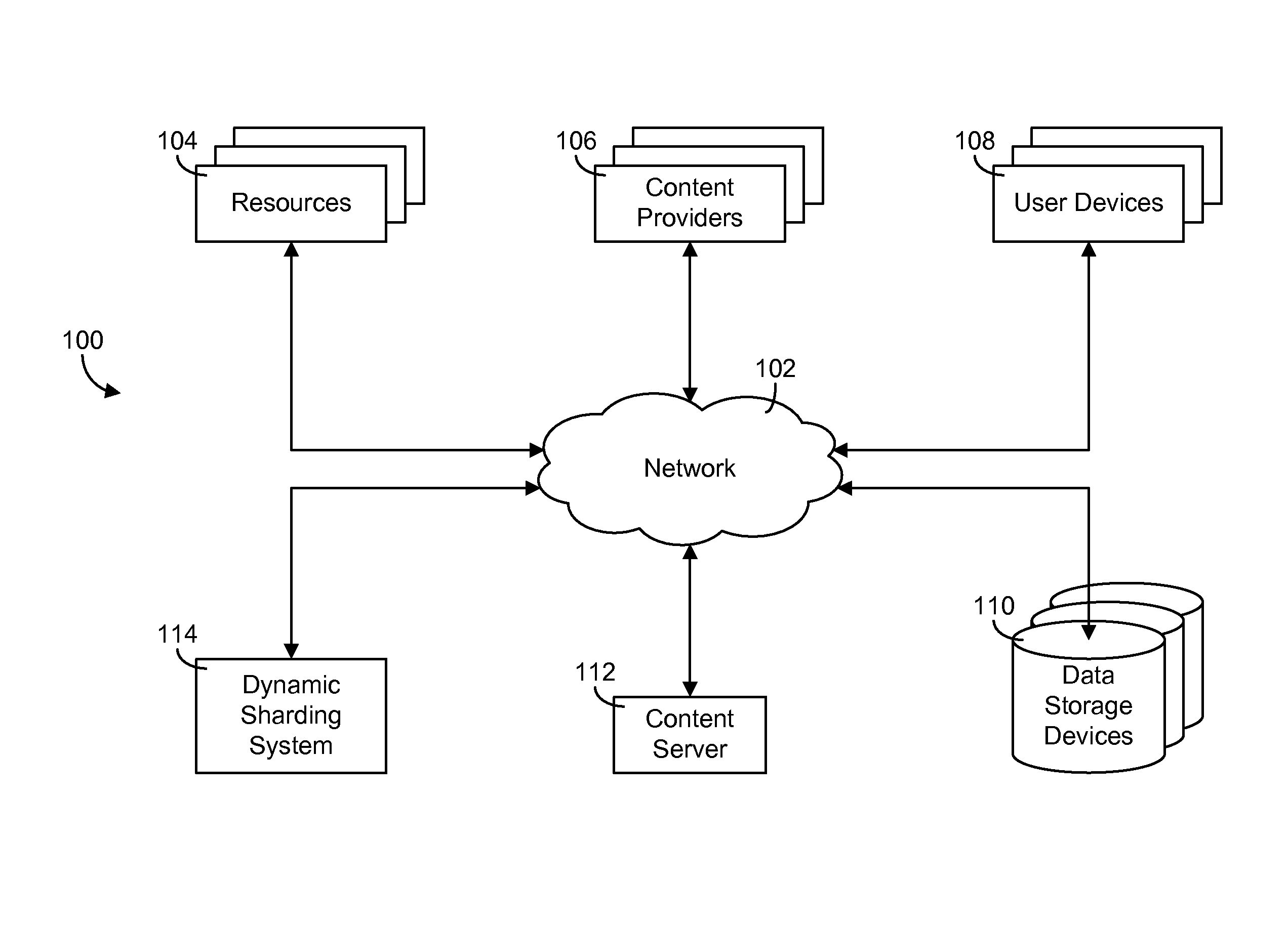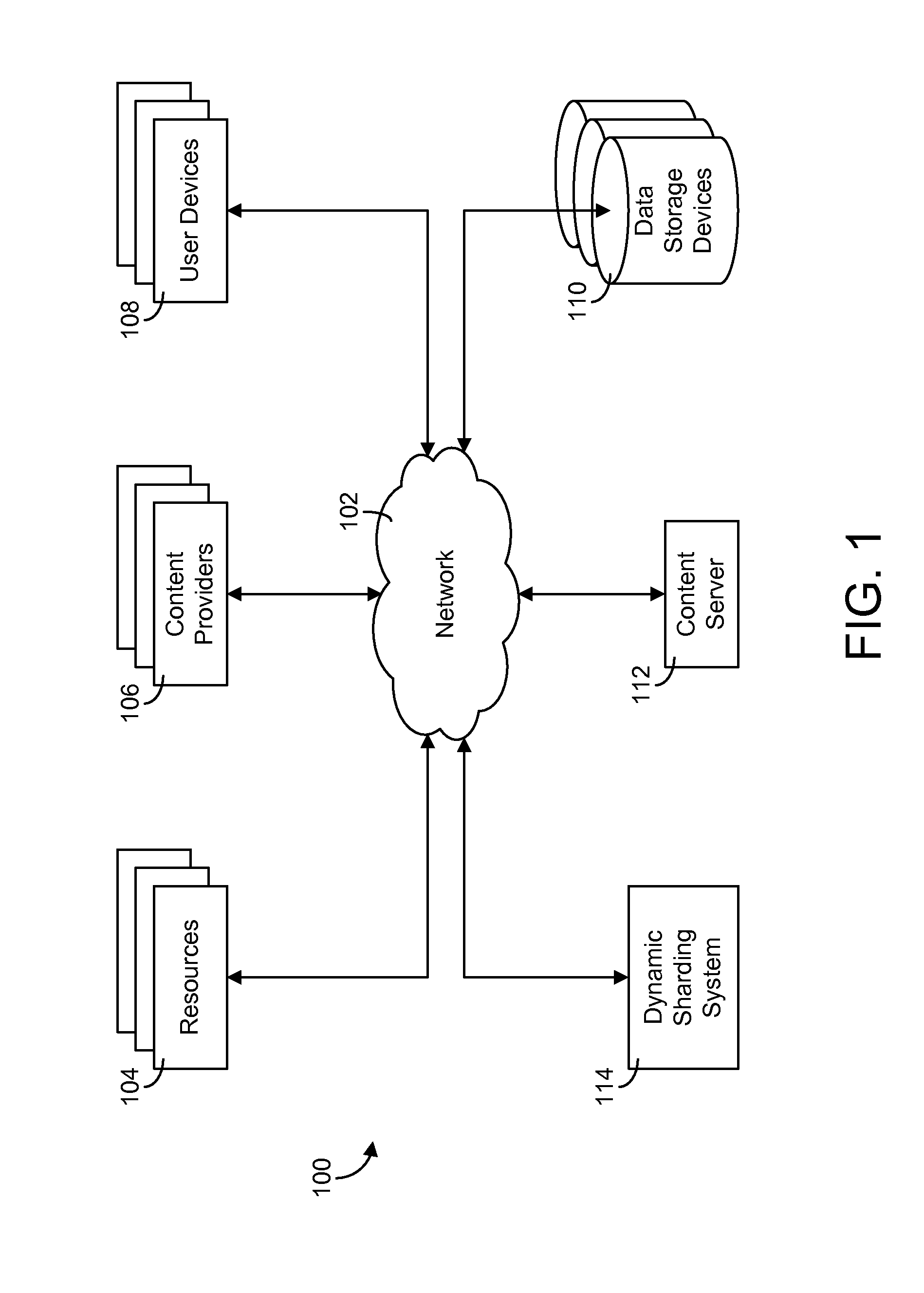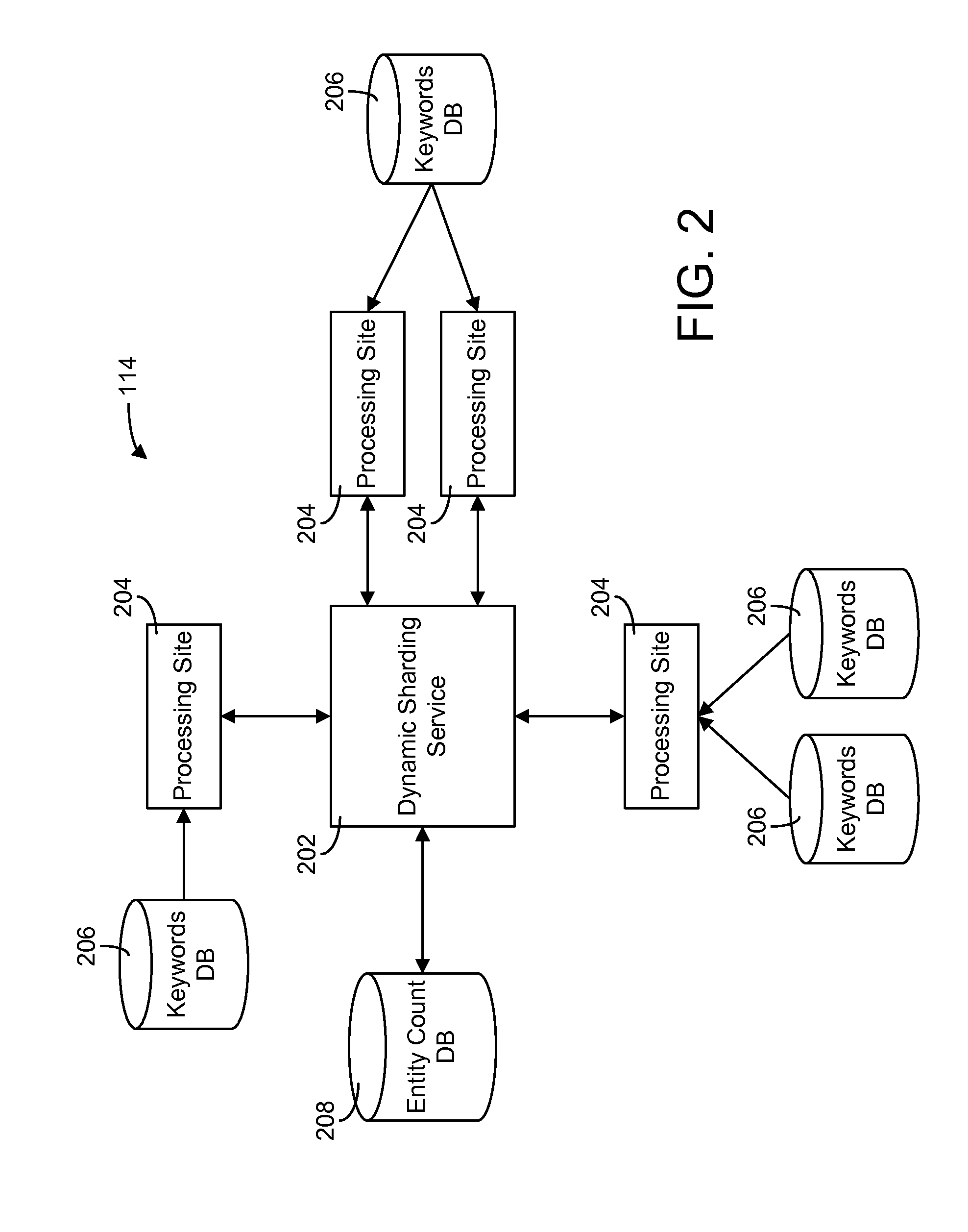Systems and methods for dynamic sharding of hierarchical data
a hierarchical data and dynamic sharding technology, applied in the field of computerized content delivery networks, can solve the problems of unbalanced shards, inability to adapt to changes, and inability to handle different data distributions well
- Summary
- Abstract
- Description
- Claims
- Application Information
AI Technical Summary
Benefits of technology
Problems solved by technology
Method used
Image
Examples
Embodiment Construction
[0032]Referring generally to the FIGURES, systems and methods for dynamic sharding of hierarchical data and components thereof are shown, according to a described implementation. The systems and methods described herein may be used to dynamically and adaptively split a data set into multiple smaller chunks (i.e., “shards”) to facilitate parallel processing thereof. The process by which the data set is split into smaller shards is referred to as dynamic sharding. The systems and methods of the present disclosure use the hierarchical structure of a database to split the data into multiple shards.
[0033]In many real-world applications, data sets are often of huge scale. For example, in a large content delivery network, it is not uncommon for a single content provider to manage millions of content items having tens of millions or even hundreds of millions of keywords associated therewith. Services standing in front of these data may need to read through all the data to serve a request (e...
PUM
 Login to View More
Login to View More Abstract
Description
Claims
Application Information
 Login to View More
Login to View More - R&D
- Intellectual Property
- Life Sciences
- Materials
- Tech Scout
- Unparalleled Data Quality
- Higher Quality Content
- 60% Fewer Hallucinations
Browse by: Latest US Patents, China's latest patents, Technical Efficacy Thesaurus, Application Domain, Technology Topic, Popular Technical Reports.
© 2025 PatSnap. All rights reserved.Legal|Privacy policy|Modern Slavery Act Transparency Statement|Sitemap|About US| Contact US: help@patsnap.com



